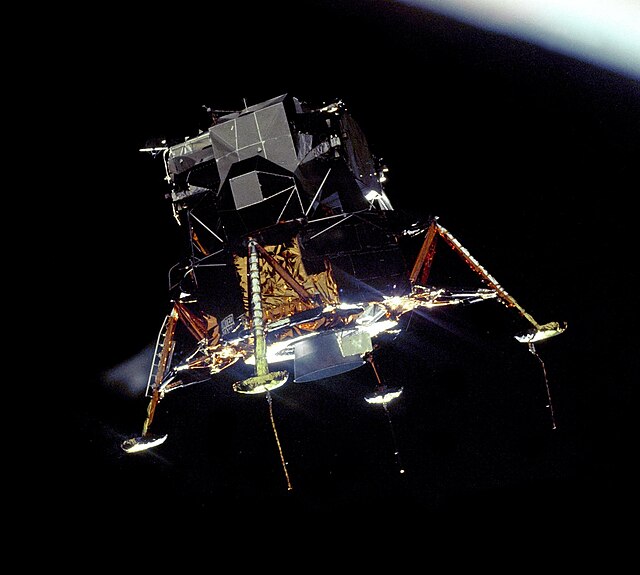A lunar lander or Moon lander is a spacecraft designed to land on the surface of the Moon. As of 2024, the Apollo Lunar Module is the only lunar lander to have ever been used in human spaceflight, completing six lunar landings from 1969 to 1972 during the United States' Apollo Program. Several robotic landers have reached the surface, and some have returned samples to Earth.
Apollo Apollo Lunar Module-5 Eagle as seen from CSM-107 Columbia
The Apollo Lunar Module, originally designated the Lunar Excursion Module (LEM), was the lunar lander spacecraft that was flown between lunar orbit and the Moon's surface during the United States' Apollo program. It was the first crewed spacecraft to operate exclusively in the airless vacuum of space, and remains the only crewed vehicle to land anywhere beyond Earth.
Apollo 16 LM Orion on the lunar surface, 1972
Lunar Module Eagle, the lunar module ascent stage of Apollo 11, in orbit above the Moon. Earth is visible in the distance. Photograph by Michael Collins aboard the Command module Columbia.
A 1962 model of the first LEM design, docked to the command and service module. The model is held by Joseph Shea, the key engineer behind the adoption of lunar orbit rendezvous mission logistics.
This 1963 model depicts the second LEM design, which gave rise to informal references as "the bug".





